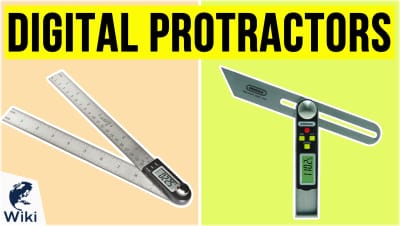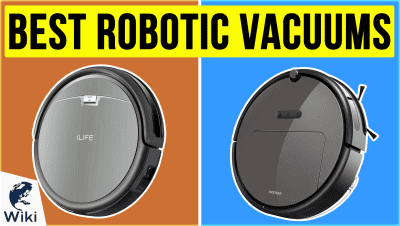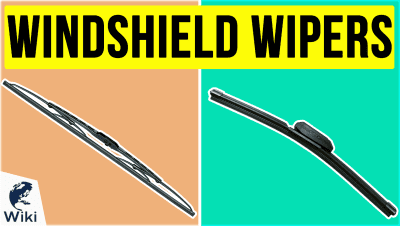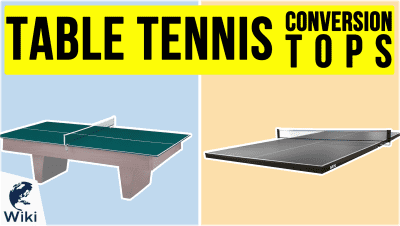What Is Ethernet And Do I Need Cat6?
When trying to set up an Internet connection for your home, you've probably run into a lot of confusing terminology. You want to be able to surf the web, stream Netflix, and help your kids with their homework, but you don't need a professional setup like the one at your office. We'll go over some of the terms and help you figure out what you need so you can save money while still getting a fast connection. And if you really want to protect your setup, read up on the best waterproof Ethernet cables. This video was made with Ezvid Wikimaker.
What Is Ethernet?
Ethernet is a diverse set of technologies for local area networks, commonly referred to as LANs. It defines standards for wiring and signals that connect your computer to the Internet. Even if the complexities of how Ethernet works go over your head, what you need to know is that Ethernet is the type of cable you need to connect your computer to a modem so you can get online. Newer models of cable can transmit data at faster speeds, so using an old cable with a new router will prevent you from getting the most out of the speeds you're paying for. If your modem isn't fast enough, check out our list of the best cable modems.
What Is Cat6?
Ethernet cables are divided into categories, such as Cat5 and Cat6. Cat5e and Cat6 are the most popular cables, because they allow for fast speeds but aren't prohibitively expensive. There are a lot of things to consider, and you can read up on why some people recommend one over another. Cat6 isn't the fastest out there, but it is more than enough to stream video or play games if you're not running the cable over a great distance. If you're a Twitch streamer or you plan to run a lot of devices at once, a Cat6 or better can ensure that you won't have to replace your cables too soon.
Cat5e versus Cat6
| Feature | Cat5e | Cat6 |
|---|---|---|
| Speed | 1,000 Mbps | 10 Gbps for 50 m |
| Price | $8-$15 per 100 ft | 20-30% higher than 5e |
| Maximum Frequency | 100 Mhz | 250 Mhz |
| Best Choice For | Long distances | Less crosstalk |
Should I Buy Cat6?
The first thing you should do is check the speed of the connection you're getting from your provider and the specs of your router. Compare those to the recommended specs of cables like the Cat5e or Cat6, and that'll let you know what you need. More advanced versions like the Cat7 will always come out, but if you get the best one available now, it should meet your needs for a while. If you have an old modem and router, it may be better to save your money so you can replace those things in the future when it's time to upgrade. Find the cable that fits your system and lets you use it to its full potential.
In Depth
If you're hoping to upgrade the speed of the Internet in your home, and this is your first time looking into it, you've probably come across a lot of confusing terms. Many product listings mention "Ethernet" and differentiate between cables such as "Cat5" and "Cat6." Let's break down this terminology so you can make the right choice for your needs.
First off, let us clear the dust of confusion and define the two terms. What is Ethernet? And then, what is "Cat 6"? Ethernet is the technology that is used to connect your computer to the Internet. Included are protocols to control the passing of information. Simply put, Ethernet acts as a bridge connecting one computer system to another to form a local area network. Cat 6, short for Category 6, is actually a type of Ethernet cable, and only one type out of many.
There have been improvements to Ethernet cables over the years, which is the reason for the different categories. The two most widely used are Cat 5e and Cat 6. Let's look at their physical and technical properties so you'll know if you need to upgrade.
Let's look at their physical and technical properties so you'll know if you need to upgrade.
In Cat 5e, the "E" stands for "Enhanced." The 5e is the most common type of Ethernet cable due to its ability to support faster speeds than its predecessors and its low production cost. The build structure was focused on eliminating the unwanted transfer of signals between communication channels, known as "crosstalk." Cat 5e promises a maximum of 1,000 megabits per second at 100 megahertz, meaning it can only support consumers who need less than that amount of bandwidth. Cat 5e is a less expensive option, but its capability is limited, so these numbers matter.
The Cat 6 is a far superior cable. Whereas the leap from Cat 5 to 5e was more of an incremental upgrade, the improvement in Cat 6 is substantial. As such, it is also more expensive. Often outfitted with foil or braided shielding to protect the twisted pairs of wires, the winding is also tighter, which helps prevent the aforementioned "crosstalk" and noise interference. Though they support the same maximum data transmission speeds as the Cat 5e, the upgrade lies in the maximum bandwidth, which increases from 100 megahertz to 250.
The length of cable you're running affects your connection speed. To achieve its optimal speeds, an individual CAT 6 cable should run no more than about 328 feet or 100 meters. While Cat 6 does indeed support 10 gigabit Ethernet connection, the capacity will be diminished if the distance is too far.
While Cat 6 does indeed support 10 gigabit Ethernet connection, the capacity will be diminished if the distance is too far.
In terms of cost, a Cat 5 or 5e cable will cost around $9 per hundred feet. Cat 6 cables will be about $2 more per 100 feet. The amount you can save with 5e depends on the length you require and what deals you may find for buying in bulk. Buyers who don't need faster speeds often go with the 5e to save money. However, they run the risk that they will need to upgrade cables again in the future for better 10 Gigabit support.
To choose the right cable, you need to know the speed of your Internet connection. If you have a speed of a gigabit per second, an old Ethernet cable would most certainly hold you back. But with anything slower, like 5 or 20 megabits per second, a Cat 5e will be fine. If you upload a lot of files to the Internet or like to stream a lot of high-quality videos, a better cable can make a big difference. Cord cutters who watch Netflix and Hulu every night can benefit from a Cat 6.
Finally, you need to check your router. If yours supports Ethernet only up to around 120 megabits per second, a Cat 6 would result in a bottleneck, so don't spend money on cable when a new router is what you need. Overall, unless your Internet usage is very demanding and you have several computers, a Cat 5e will probably be enough. But if you'd rather spend a bit more now so you don't have to replace your setup in the future, a Cat 6 will be enough to let the whole family get online without interruption.















